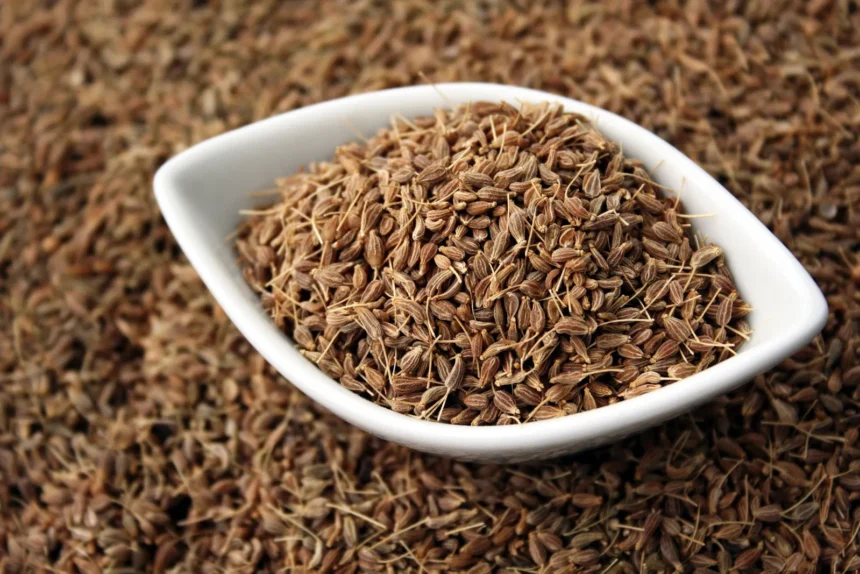Aniseed may not be the first spice that comes to mind when you think of culinary delights, but it deserves a spotlight. With its distinctive licorice flavor and aromatic essence, aniseed has been captivating taste buds for centuries. It’s more than just a unique addition to your spice rack; this tiny seed packs a punch in both flavor and health benefits.
From ancient civilizations to modern kitchens, aniseed offers versatility that’s hard to ignore. Whether you’re sipping herbal tea or experimenting with bold dishes, understanding this enchanting ingredient can elevate your cooking experience. Dive into the world of aniseed as we explore its rich history, remarkable uses in cooking and healing, and discover how you can seamlessly incorporate it into your daily diet. Get ready to uncover why aniseed might just become your new favorite superfood!
The History and Origin of Aniseed
Aniseed has a rich history that dates back thousands of years. Ancient Egyptians used it not only for flavor but also in their embalming processes. They recognized its aromatic qualities early on.
The spice originated from the eastern Mediterranean region and parts of Southwest Asia. Its cultivation spread through trade routes, making its way to Greece and Rome. Both civilizations praised aniseed for its culinary and medicinal properties.
In medieval Europe, aniseed gained popularity as a digestive aid. It was often included in breads and pastries, showcasing its versatility in sweet dishes.
By the time of the Renaissance, aniseed was firmly established across various cultures. Today, it remains cherished worldwide for both flavor and health benefits, showing how timeless this humble seed truly is.
Flavor Profile and Culinary Uses
Aniseed boasts a distinct sweet, aromatic flavor reminiscent of licorice. Its warm notes can elevate both savory and sweet dishes alike. Just a pinch can transform the ordinary into something extraordinary.
In culinary applications, aniseed shines in baked goods like cookies and cakes. It pairs beautifully with fruits, enhancing the sweetness of pears or apples in desserts.
For savory dishes, it complements rich meats such as pork or duck. Chefs often use it to season stews or sauces for added depth.
Aniseed is also common in spice blends around the world. From Indian masalas to Middle Eastern za’atar, its versatility knows no bounds.
Don’t forget beverages! Aniseed infuses delightful flavors into teas and liqueurs, offering warmth during colder months. It’s no wonder that cooks and mixologists alike cherish this unique spice for its far-reaching culinary potential.
Medicinal Properties and Health Benefits
Aniseed has a rich history in traditional medicine. It’s prized for its potential to relieve digestive issues like bloating and gas. Many people turn to aniseed tea after meals for soothing relief.
Rich in antioxidants, aniseed helps combat oxidative stress. This can support overall health and may bolster the immune system.
The oil extracted from aniseed contains compounds that are believed to have anti-inflammatory properties. These might help alleviate symptoms of respiratory conditions such as asthma or bronchitis.
Moreover, some studies suggest that aniseed exhibits antimicrobial qualities, potentially fighting off harmful bacteria and fungi.
Women have also used it traditionally to ease menstrual discomfort due to its hormone-balancing effects.
Incorporating this spice into your diet could provide various benefits while enhancing flavor in dishes.
How to Incorporate Aniseed into Your Diet
Incorporating aniseed into your diet can be both easy and enjoyable. Start by adding it to baked goods. It lends a unique flavor to breads, muffins, and cookies.
For savory dishes, consider sprinkling ground aniseed onto roasted vegetables or mixing it into marinades for meats. Its sweet yet spicy profile enhances the overall taste.
Aniseed also works wonders in beverages. Brew it with herbal teas or infuse your favorite cocktails for an aromatic twist.
Don’t forget about smoothies! A pinch of ground aniseed can elevate the flavor while providing added health benefits.
If you’re feeling adventurous, try making homemade spice blends that feature aniseed as a key ingredient. This adds depth and complexity to your culinary creations without much effort.
Experimenting with this versatile spice could unlock new flavor dimensions in everyday meals.
Alternative Uses for Aniseed
Aniseed isn’t just a culinary delight; it has several alternative uses that make it even more fascinating.
For starters, its aromatic qualities lend themselves beautifully to potpourri and essential oil blends. The sweet, licorice scent can create a calming atmosphere in any room.
In gardening, aniseed plants can attract beneficial insects like ladybugs and lacewings. They help in pest control while adding visual appeal to your garden.
You might also find aniseed as a natural remedy for aromatherapy. Its soothing properties are thought to alleviate stress and promote relaxation when used in diffusers or massage oils.
Craft enthusiasts appreciate aniseed for its decorative potential too. Dried seeds can be incorporated into homemade candles or soaps, enhancing both fragrance and aesthetic charm.
Each unique use highlights the versatility of this remarkable spice beyond traditional cooking applications.
Conclusion: Is Aniseed the Next Superfood?
Aniseed has emerged as a fascinating ingredient with a variety of applications. Its unique flavor adds depth to dishes, making it a favorite in both sweet and savory culinary creations. The medicinal properties of aniseed offer intriguing health benefits that many are beginning to explore.
Incorporating aniseed into your diet is simple and enjoyable. Whether you sprinkle it on baked goods, brew it in teas, or use it to enhance your spice blends, the possibilities are endless. Beyond its culinary uses, aniseed also finds roles in traditional remedies and even beauty products.
As interest grows around natural ingredients that support wellness, aniseed stands out for its rich history and versatility. With its potential health advantages combined with delightful flavors, it’s no wonder some consider this humble seed a contender for the next superfood status. Embracing aniseed might just be the flavorful step towards better overall well-being people have been looking for.


